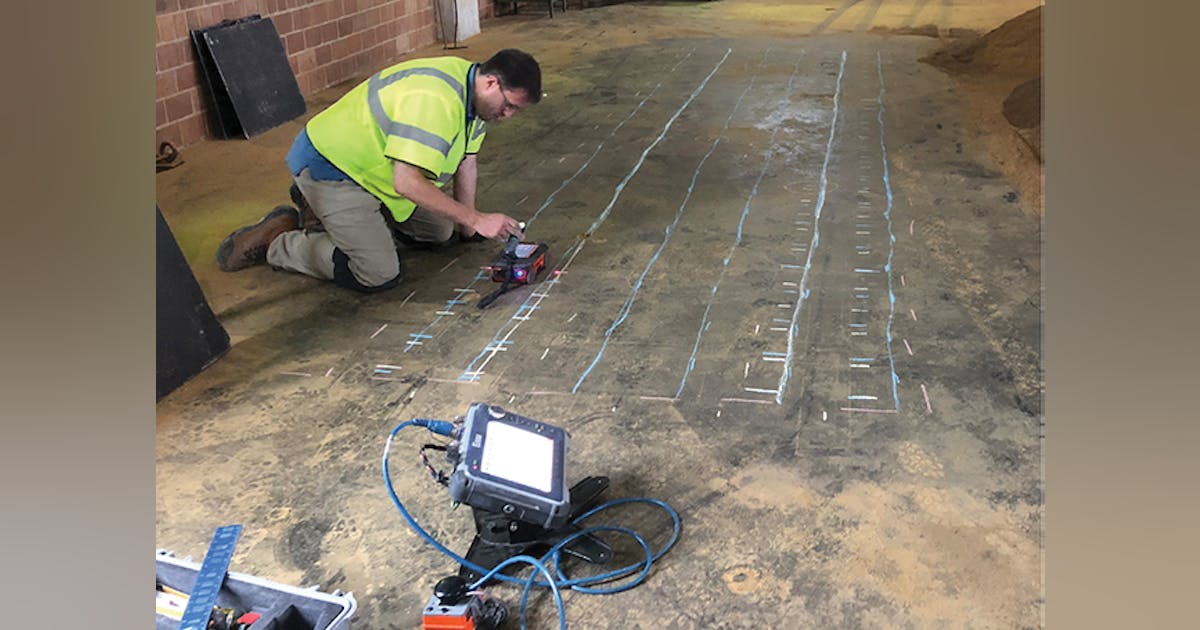Elevate Your Building Process With the Strategic Insights of Concrete Scanning for Boosted Productivity
One such modern technology that has actually transformed the building and construction industry is concrete scanning. By taking advantage of the critical insights provided by concrete scanning, construction experts can open a realm of improved efficiency and streamlined processes.

Advantages of Concrete Scanning
Enhancing task performance and safety and security, concrete scanning provides a non-destructive method for discovering concealed things within concrete frameworks. By making use of modern technologies such as ground-penetrating radar (GPR) and concrete x-ray imaging, building and construction teams can precisely find rebar, post-tension cable televisions, electrical avenues, and various other blockages before drilling, reducing, or coring right into concrete.
The advantages of concrete scanning are numerous. Building sites can be intricate environments, and understanding what lies under the surface can stop injuries and accidents.
Additionally, concrete scanning promotes general task efficiency by improving operations and stopping rework. By identifying prospective problems beforehand, teams can change their strategies proactively, saving time and sources over time. Essentially, the adoption of concrete scanning modern technologies is a calculated investment that pays returns in regards to performance, safety, and cost-effectiveness.
Modern Technology Combination for Performance
Concrete scanning's capacity to enhance process and improve job effectiveness can be further maximized via critical integration of sophisticated technologies. By including Building Info Modeling (BIM) software program right into concrete scanning processes, building and construction teams can accomplish a greater degree of accuracy and control. Additionally, the integration of Enhanced Reality (AR) innovation with concrete scanning can boost on-site visualization, allowing project supervisors and employees to overlay electronic details onto the physical setting in actual time.
Avoiding Expensive Mistakes
Just how can thorough attention to information during concrete scanning procedures aid building groups in preventing pricey errors? Concrete scanning plays a critical role in identifying potential problems prior to they intensify right into costly errors. By making use of innovative scanning modern technologies such as Ground Passing Through Radar (GPR) and electro-magnetic induction, construction teams can accurately discover rebar, utilities, spaces, and other blockages within concrete frameworks. This level of precision enables project supervisors to make informed decisions concerning the format and layout of their building and construction strategies, lowering the danger of unintentional damage to vital facilities during the building procedure. Furthermore, concrete scanning assists in making sure structural integrity by recognizing weak points or flaws in the concrete at an early stage, allowing for prompt repair services and adjustments. By proactively dealing with these issues, building and construction groups can stay clear of expensive errors such as rework, hold-ups, or security dangers that may arise from forgotten disparities in the concrete framework. Eventually, spending in detailed concrete scanning procedures proves to be an economical strategy in the future, saving both time and sources while improving overall job performance and high quality.
Enhancing Task Administration
Meticulous attention to detail during concrete scanning refines not only helps in preventing expensive mistakes however also lays a strong foundation for reliable project administration in building and construction endeavors. By integrating concrete scanning technology into project administration approaches, building and construction teams can improve process, improve interaction, and guarantee that jobs remain on track.
Concrete scanning supplies useful understandings right into the architectural honesty of existing aspects, allowing task managers to make educated decisions regarding design modifications or construction sequences. This proactive technique reduces the danger of unexpected delays or revamp, eventually saving time and resources. In addition, the information obtained from concrete scanning can be incorporated right into Building Info Modeling (BIM) systems, making it possible for real-time cooperation and control among different stakeholders.
Additionally, concrete scanning assists job managers identify possible threats or obstacles prior to they intensify into bigger concerns, promoting a safer job setting for all included. With improved exposure and precision supplied by concrete scanning innovation, task supervisors can successfully prepare, monitor, and execute building projects with better effectiveness and confidence.
Making The Most Of Efficiency
To enhance performance in building jobs, carrying out efficient methods and utilizing innovative modern technologies is critical. Maximizing efficiency involves improving procedures, optimizing resource allocation, and lessening downtime. One key element of making the most of performance is with the fostering of concrete scanning technology. By utilizing ground-penetrating radar (GPR) and various other scanning approaches, construction teams can precisely situate rebar, conduits, and other subsurface components, minimizing the risk of costly errors and hold-ups throughout excavation and exploration.
In addition, embracing Building Information Modeling (BIM) software program can considerably improve efficiency by producing in-depth 3D designs that boost task visualization and coordination amongst different trades. BIM allows for better clash detection, allowing problems to be identified and dealt with prior to construction also starts, saving time and sources in the lengthy run.
Implementing a lean construction approach, which concentrates on eliminating waste and optimizing performance throughout all project stages, is one more efficient technique for making the most of productivity. By fostering collaboration, interaction, and constant improvement, building groups can work more cohesively in the direction of attaining job goals in a streamlined and effective manner.
Conclusion
To conclude, the tactical implementation of concrete scanning in the building and construction process uses More Help numerous advantages, consisting of enhanced effectiveness, cost financial savings, enhanced job administration, and over here enhanced efficiency. By integrating this technology, building and construction groups can avoid pricey mistakes, improve their operations, and maximize their general job output. Concrete scanning is an important device that can raise the building procedure and bring about more successful and effective outcomes.
